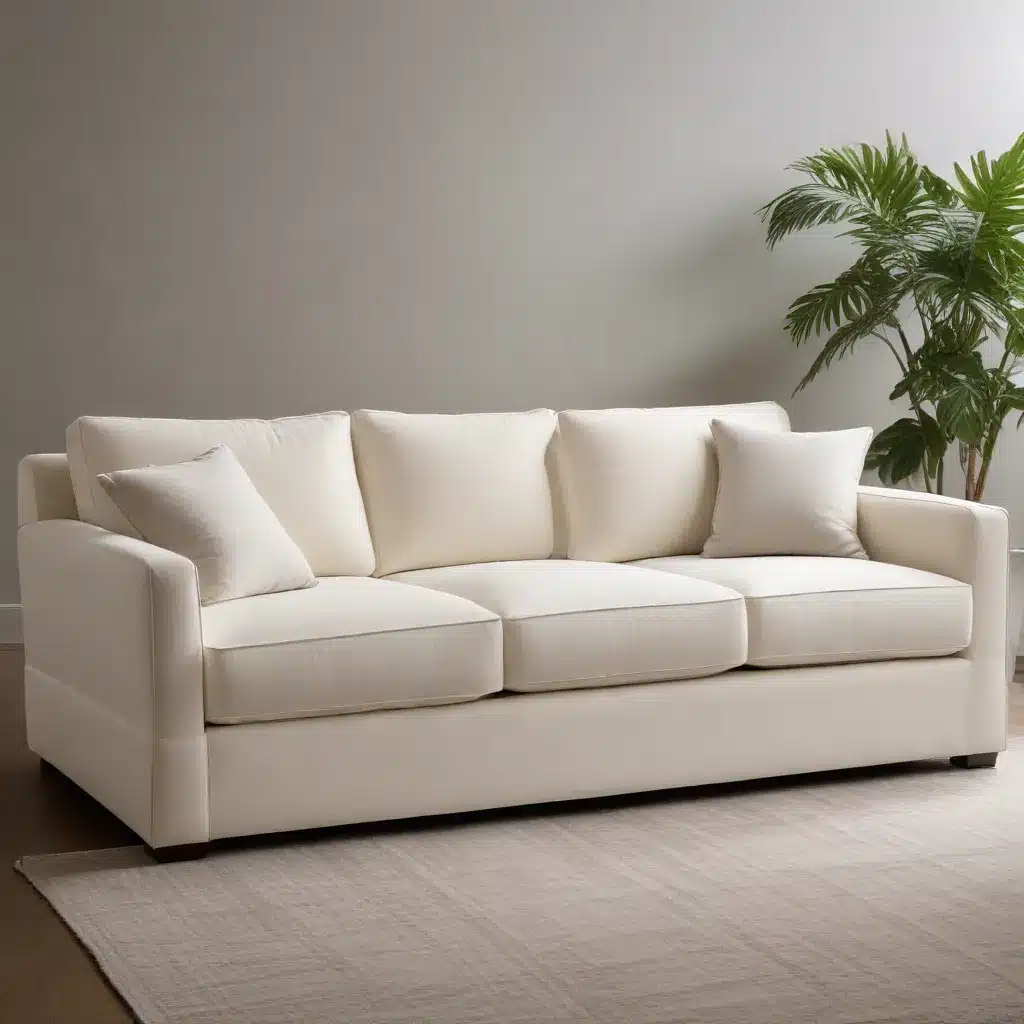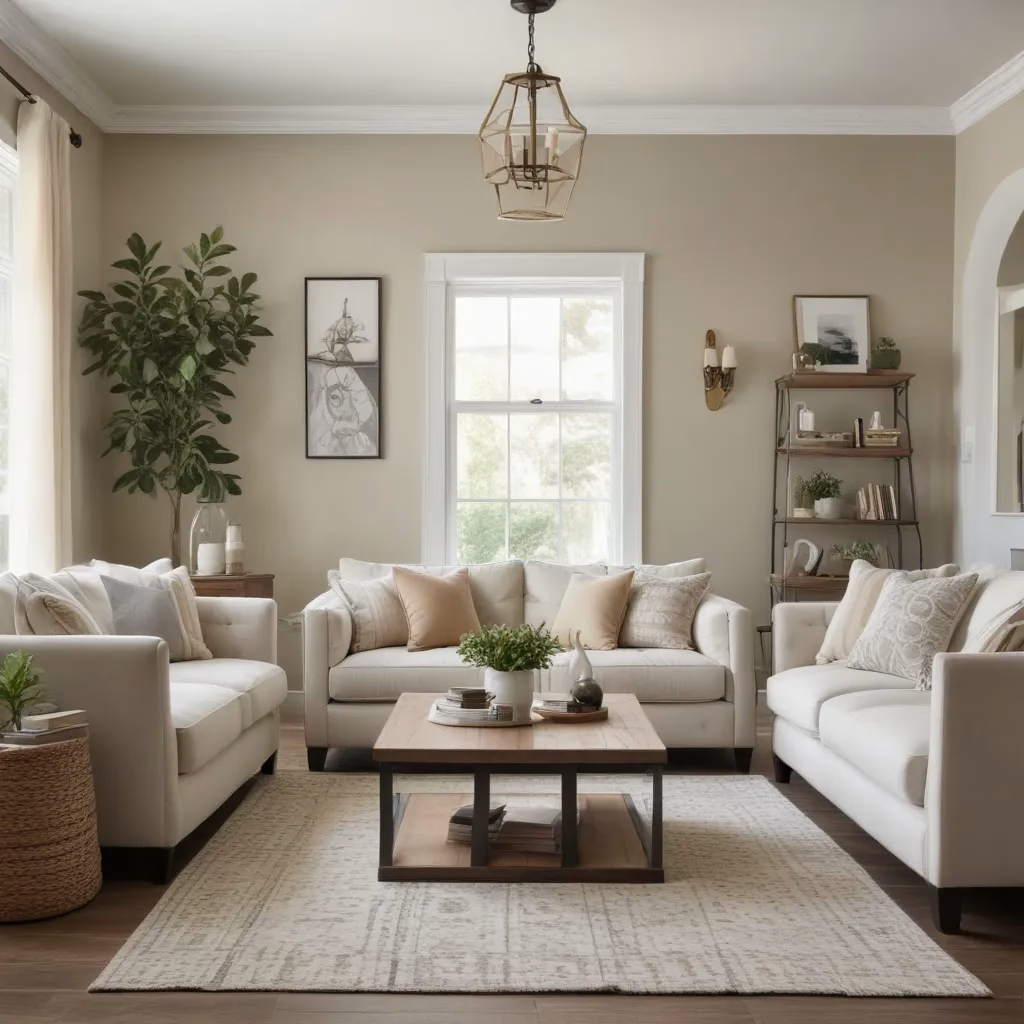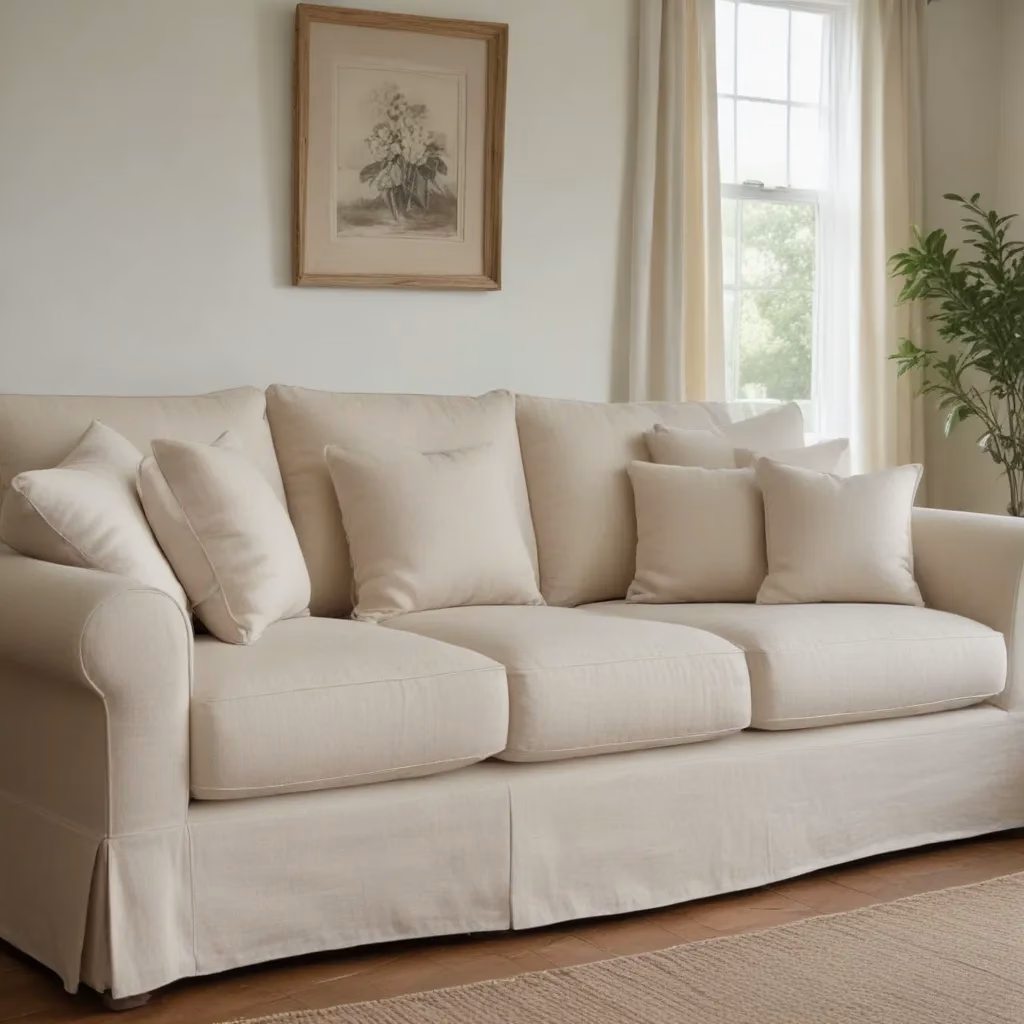
The Art of Personalized Sofa Design
As a furniture specialist with years of experience, I’ve seen firsthand how a well-chosen sofa can transform a living space. The sofa is often the centerpiece of a room, setting the tone for comfort and style. But what if you could go beyond simply choosing from pre-made options? What if you could create a sofa that’s uniquely yours, tailored to your exact specifications?
That’s where bespoke sofa design comes in. It’s an approach that allows you to customize every aspect of your sofa, from the frame to the fabric, ensuring that it fits perfectly with your lifestyle and aesthetic preferences. The process of creating a bespoke sofa is both exciting and rewarding, offering a level of personalization that off-the-shelf furniture simply can’t match.
In my experience, clients who opt for custom sofas often express a sense of pride and satisfaction in their furniture that goes beyond mere functionality. They feel a connection to their sofa, knowing that it was crafted specifically for them. This emotional attachment can transform a simple piece of furniture into a treasured part of the home.
Understanding Your Sofa Needs
Before diving into the world of custom sofas, it’s essential to take stock of your specific needs and preferences. As I often tell my clients, a sofa is an investment, and understanding what you want from it will guide the entire customization process.
First, consider how you use your living space. Are you looking for a cozy spot for family movie nights? A formal seating area for entertaining guests? Or perhaps a versatile piece that can adapt to different situations? Your lifestyle will dictate many aspects of your sofa design, from the size and shape to the durability of the materials used.
Next, think about your aesthetic preferences. What style of decor do you gravitate towards? Are you a fan of sleek, modern lines, or do you prefer a more traditional, plush look? The beauty of custom design is that you’re not limited to one style or another – you can mix and match elements to create a sofa that truly reflects your personal taste.
Lastly, don’t forget about practical considerations like the size of your room and any existing furniture you need to work around. I’ve seen many clients fall in love with a sofa design, only to realize it won’t fit through their front door or overwhelms their living space. Taking measurements and considering the flow of your room is crucial in the early stages of sofa design.
The Building Blocks of a Custom Sofa
When it comes to creating a bespoke sofa, there are several key components to consider. Let’s break them down:
Frame
The frame is the backbone of your sofa, providing structure and support. In my experience, hardwood frames, particularly those made from kiln-dried oak or beech, offer the best durability. They’re resistant to warping and can withstand years of use without losing their shape.
For a more eco-friendly option, some of my clients have opted for frames made from sustainably sourced wood or even recycled materials. These can be just as sturdy as traditional hardwood frames while aligning with environmentally conscious values.
Suspension System
The suspension system is what gives your sofa its bounce and comfort. There are several options to choose from:
- Eight-way hand-tied springs: This traditional method offers superior comfort and longevity but can be more expensive.
- Sinuous springs: These S-shaped wires provide good support at a lower cost.
- Web suspension: Made from elastic bands, this system is often used in more modern, streamlined designs.
Your choice of suspension will affect both the comfort and the look of your sofa. In my experience, eight-way hand-tied springs are worth the investment for clients who prioritize comfort and durability above all else.
Cushions
Cushions are where you can really start to personalize the comfort level of your sofa. Options include:
- Foam: Offers a firm, supportive sit. High-density foam will maintain its shape longer.
- Feather and down: Provides a soft, luxurious feel but requires regular fluffing.
- Foam core with feather wrap: A popular choice that balances support and softness.
I often recommend a combination of materials for the best of both worlds. For example, a foam core wrapped in a layer of feathers can provide the perfect balance of support and plushness.
Upholstery
The fabric you choose for your sofa will have a significant impact on both its appearance and durability. Some popular options include:
- Leather: Durable and easy to clean, with a luxurious look that ages beautifully.
- Cotton: Breathable and soft, but can wrinkle and stain more easily.
- Linen: Gives a relaxed, natural look but can be prone to wrinkling.
- Synthetic blends: Often more durable and stain-resistant than natural fibers.
When selecting fabric, consider factors like durability, ease of cleaning, and how well it complements your existing decor. I always encourage clients to order fabric samples to see and feel them in their own home before making a final decision.
Tailoring Your Sofa’s Style
Now that we’ve covered the basics, let’s talk about how to tailor your sofa’s style to your personal taste. This is where the fun really begins!
Sofa Shapes
The shape of your sofa sets the tone for your entire living space. Here are some popular options:
- Chesterfield: Known for its quilted or tufted leather upholstery and rolled arms.
- Lawson: Features a clean, boxy shape with loose back cushions.
- Tuxedo: Characterized by arms the same height as the back, creating a sleek silhouette.
- Sectional: Modular pieces that can be arranged in various configurations.
Your choice of shape should be influenced by both your aesthetic preferences and the layout of your room. For example, a sectional can be great for large, open spaces, while a compact tuxedo sofa might be perfect for a small apartment.
Arm Styles
The arms of your sofa can dramatically alter its appearance:
- Rolled arms: Classic and traditional.
- Square arms: Modern and clean-lined.
- Sloped arms: A softer look that bridges traditional and contemporary styles.
- Tuxedo arms: Same height as the back for a formal appearance.
In my experience, the arm style can make or break a sofa’s look. I’ve had clients completely transform the feel of their living room just by changing from rolled arms to something more streamlined.
Back Styles
The back of your sofa affects both its appearance and comfort:
- Tight back: No loose cushions, offering a neat, tailored look.
- Loose back: Separate cushions that can be removed and rearranged.
- Tufted back: Buttons or stitching create a quilted effect.
- Pillow back: Multiple pillows create a casual, comfortable appearance.
Your choice of back style should balance aesthetics with practical considerations. For example, a tight back sofa might look more formal, but a loose back allows for easier cleaning and cushion rotation.
Personalizing Your Sofa’s Comfort
Comfort is subjective, which is why the ability to customize is so valuable. Here are some ways to personalize your sofa’s comfort level:
Seat Depth
The depth of your sofa’s seat can greatly affect its comfort:
- Standard depth (21-24 inches): Suitable for most people.
- Deep seat (24+ inches): Great for taller individuals or those who like to lounge.
- Shallow seat (less than 21 inches): Good for shorter individuals or in spaces where you want to encourage upright sitting.
I’ve found that seat depth is often overlooked, but it can make a huge difference in how comfortable a sofa feels to different users.
Cushion Firmness
The firmness of your cushions is another crucial factor:
- Soft: Offers a “sink-in” feel, great for casual lounging.
- Medium: A good all-rounder, balancing comfort and support.
- Firm: Provides more support, often preferred by those with back issues.
Many of my clients opt for different firmness levels in different parts of the sofa. For example, firmer seat cushions paired with softer back cushions can provide a nice balance of support and comfort.
Additional Comfort Features
Consider adding extra features for enhanced comfort:
- Reclining mechanisms: Great for those who love to put their feet up.
- Adjustable headrests: Provide extra neck support when needed.
- Built-in footrests: Offer flexibility without the bulk of a full recliner.
These features can significantly enhance the functionality of your sofa, turning it into a true relaxation station.
Selecting the Perfect Fabric
Choosing the right fabric for your custom sofa is crucial. It affects not only the appearance but also the durability and maintenance of your furniture. Here’s what to consider:
Durability
If you have children or pets, durability should be a top priority. Look for fabrics with high rub counts (at least 25,000 for residential use). Some durable options include:
- Microfiber: Resistant to stains and easy to clean.
- Leather: Extremely durable and ages beautifully.
- Performance fabrics: Engineered to resist stains, fading, and wear.
I often recommend performance fabrics to clients with active households. They’ve come a long way in recent years and now offer the look and feel of traditional fabrics with added durability.
Color and Pattern
The color and pattern of your sofa can set the tone for your entire room:
- Neutral colors: Offer versatility and timelessness.
- Bold colors: Make a statement and can serve as a focal point.
- Patterns: Add visual interest but can be more challenging to coordinate with other decor.
When choosing a color or pattern, consider how it will work with your existing decor and how it might affect your ability to change your room’s style in the future.
Texture
Texture adds depth and interest to your sofa:
- Smooth textures: Give a sleek, modern look.
- Rough textures: Add a casual, cozy feel.
- Mixed textures: Combine different materials for a unique look.
I’ve found that texture can be just as impactful as color in defining a sofa’s style. Don’t be afraid to mix and match textures for a truly custom look.
The Customization Process
Creating a bespoke sofa is an exciting journey. Here’s what you can typically expect:
- Consultation: Discuss your needs, preferences, and budget with a furniture specialist.
- Design: Work with a designer to create a sofa that meets your specifications.
- Material selection: Choose your fabrics, cushion fillings, and other materials.
- Approval: Review and approve the final design and materials.
- Production: Your sofa is handcrafted to your specifications.
- Delivery and setup: Your new custom sofa is delivered and placed in your home.
Throughout this process, communication is key. Don’t hesitate to ask questions or request changes – the goal is to create a sofa you’ll love for years to come.
Caring for Your Custom Sofa
Once you have your perfect custom sofa, proper care is essential to keep it looking its best:
- Regular cleaning: Vacuum weekly and promptly clean any spills.
- Rotation: Rotate cushions regularly to ensure even wear.
- Professional cleaning: Consider professional cleaning every 12-18 months.
- Protection: Use arm covers or throws in high-use areas.
Following these care instructions will help your custom sofa maintain its beauty and comfort for years to come.
The Value of Custom Sofas
While custom sofas often come with a higher price tag than off-the-shelf options, they offer significant value:
- Perfect fit: Both in terms of your space and your comfort preferences.
- Quality materials: Often higher quality than mass-produced furniture.
- Longevity: Well-made custom sofas can last for decades.
- Uniqueness: Your sofa will be one-of-a-kind, reflecting your personal style.
In my experience, clients who invest in custom sofas often find that they enjoy their furniture more and keep it for longer, making it a worthwhile investment in the long run.
Conclusion
Creating a custom sofa is a journey of self-expression and comfort. It’s an opportunity to craft a piece of furniture that perfectly suits your needs, tastes, and lifestyle. From selecting the perfect frame and suspension system to choosing just the right fabric and cushion fill, every decision you make contributes to creating a sofa that’s uniquely yours.
Remember, the key to a successful custom sofa is thoughtful consideration of your needs and clear communication with your furniture specialist. Don’t be afraid to ask questions, request samples, and take your time with decisions. After all, this is a piece of furniture you’ll be living with for years to come.
If you’re ready to start your custom sofa journey, why not explore the options available at Sofa Spectacular? With their expertise in custom furniture, they can guide you through the process of creating the perfect sofa for your home.
A custom sofa is more than just a piece of furniture – it’s a reflection of your personality and a commitment to comfort and quality in your home. So go ahead, dream big, and create a sofa that you’ll love coming home to every day.



